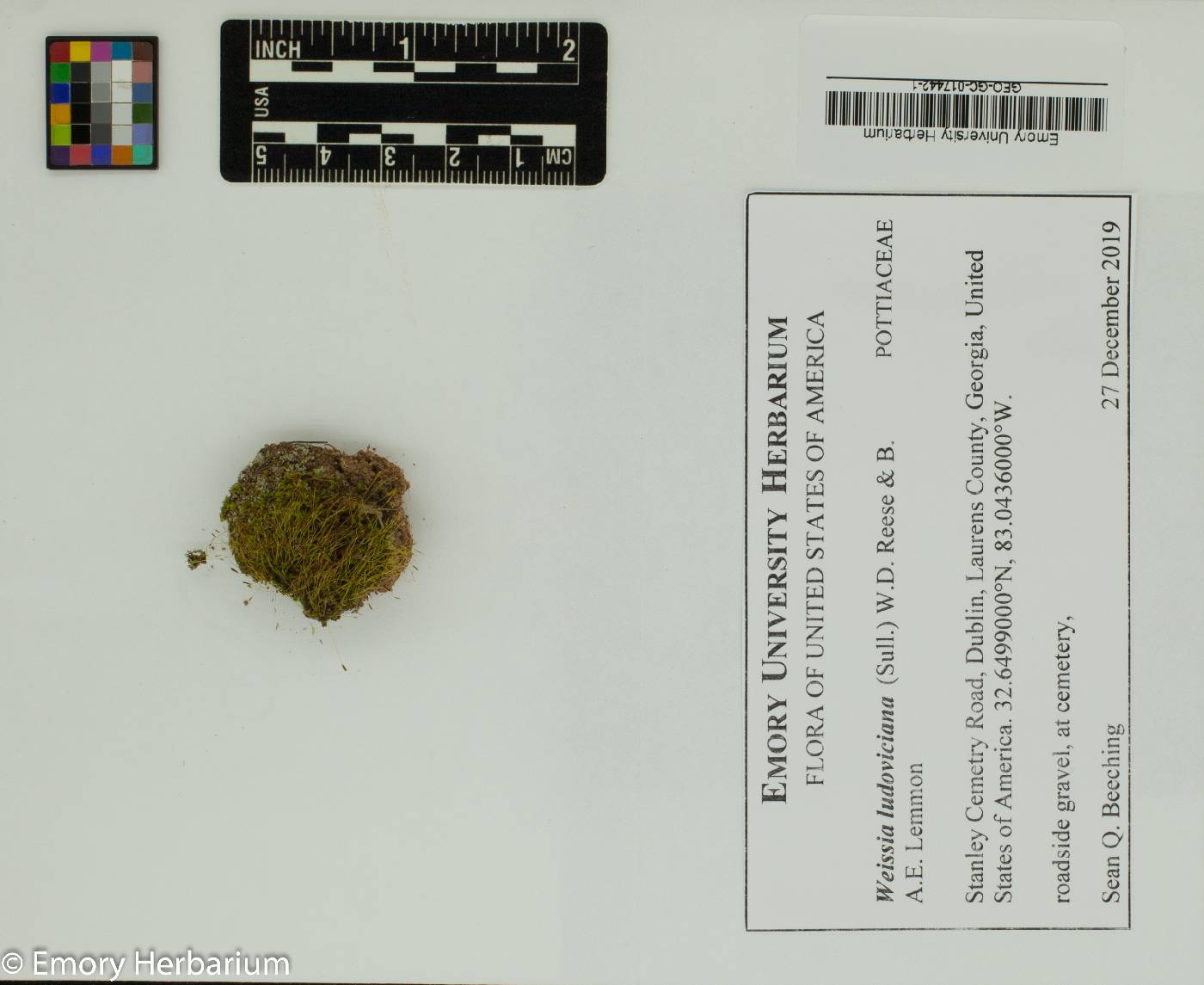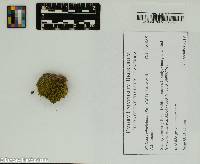
|
|
|
|
Family: Pottiaceae
|
Leaves long-lanceolate, base long-elliptic or narrowly ovate, shoulders absent, distal laminal margins plane or erect, apex broadly channeled, acute, mucro very strong, of 7-10(-14) cells; costal adaxial stereid band smaller than the abaxial; distal laminal cells 8-10(-12) µm wide. Sexual condition rhizautoicous. Seta short, 0.08-0.015 cm not including the vaginula. Capsule cleistocarpic, ovoid with a short-rostrate apiculus. Capsules mature fall-spring. Moist soil, fields, among grasses, roadside banks; low to moderate elevations; Ala., Ark., Fla., Ky., La., Miss., N.C., S.C., Tex., Va., W.Va. The gametophyte of Weissia ludoviciana is quite like that of W. brachycarpa. If it has a hybrid origin, then the archegoniate parent is the latter species. Weissia ludoviciana, W. muehlenbergiana, and W. phascopsis are similar in the short-seta, cleistocarpic capsules and long-lanceolate leaves, but differ most constantly in the traits given in the key. Additional differences observed, which may prove inconstant on revision, are: W. ludoviciana is rhizautoicous, with antheridia in extremely small, serrate-leaved buds, on soil near base of the archegoniophore, the capsule has stomates and a weakly differentiated annulus of 3-4 rows of smaller cells, and the calyptra is ca. 1 mm; W. muehlenbergiana is cladautoicous, the capsule lacks stomates and an annulus is not distinguishable, and the calyptra is 0.5-0.6 mm; W. phascopsis is cladautoicous, the capsule has stomates and the annulus somewhat differentiated as a ridge, and the calyptra is 1.2-1.4 mm. The hybrid Weissia ludoviciana × W. controversa was reported by W. D. Reese and B. E. Lemmon (1965).
|
This project was made possible in part by the Institute of Museum and Library Services [MG-70-19-0057-19].
Powered by Symbiota




